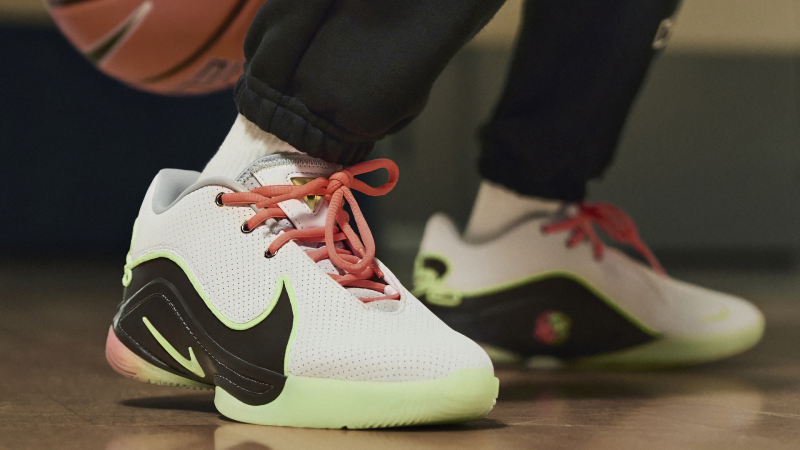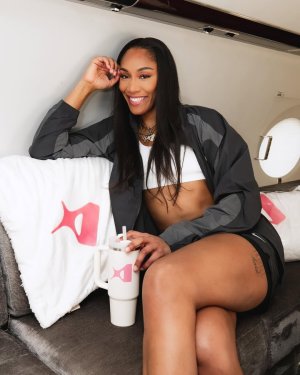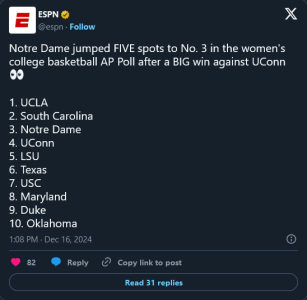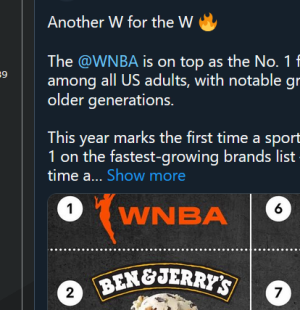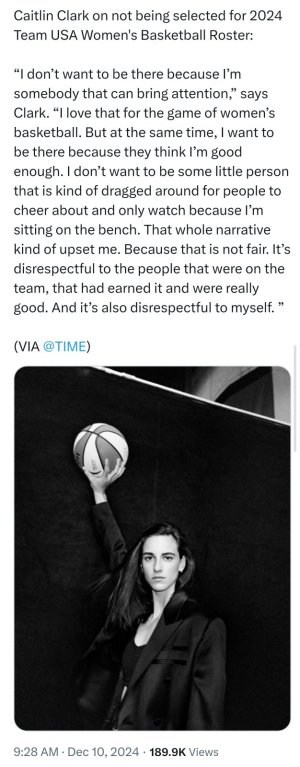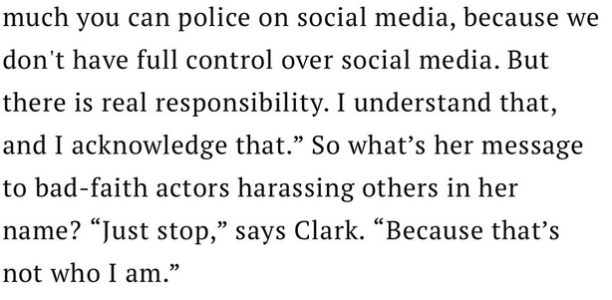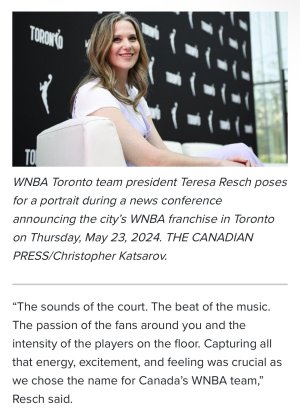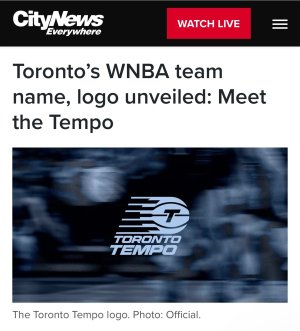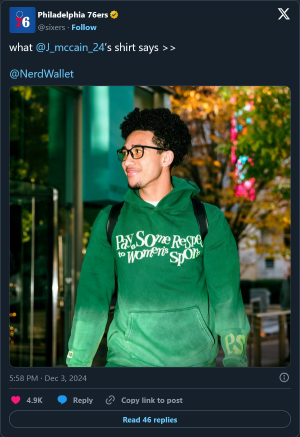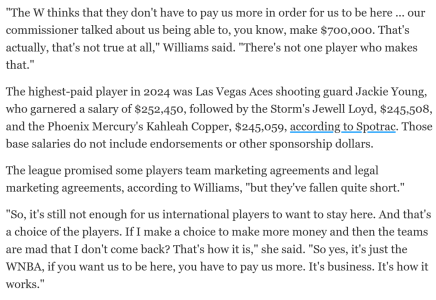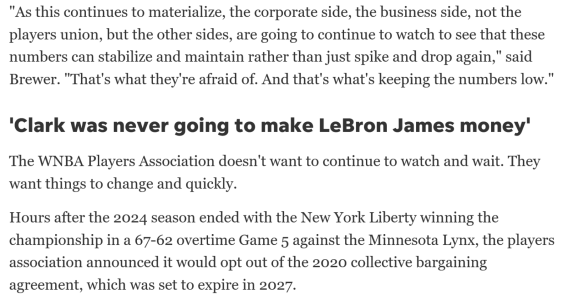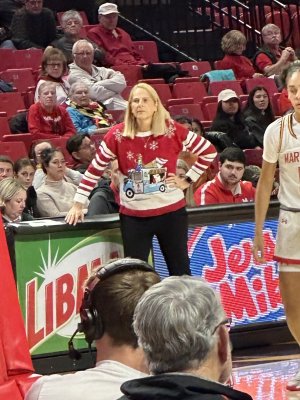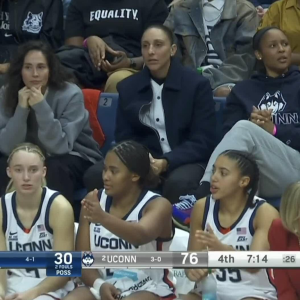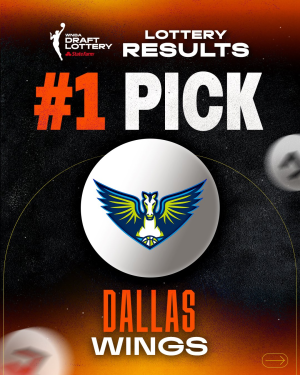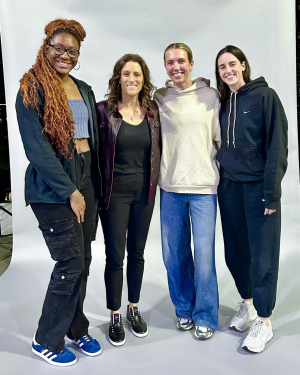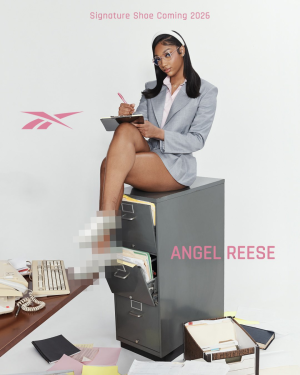WNBA expansion could add 2 teams before 2024. Here are 6 possible cities
In the next few months, the most talked about issue in the WNBA should finally have some clarity.
Commissioner Cathy Engelbert told The Athletic she hopes to identify one or two cities for an expansion franchise by the start of the WNBA playoffs in September or by year’s end at the latest. Those new teams could begin to play as early as the 2024 season, she said. This would be the first time the league has added an expansion team since the Atlanta Dream were founded in 2008.
When the new team, or teams, enter the WNBA, it will mark the long-awaited end to a process that has already reached critical mass. The Athletic spoke to more than 20 people in and around the WNBA with knowledge of league expansion and its financial picture to learn more about the league’s plans. It is an attempt to not only suss out which cities have a chance to become a future WNBA outpost, but also to understand how much a franchise is worth in a league where team values are hard to ascertain.
The WNBA has whittled its list to 10 to 12 cities, Engelbert said, after it began with 100 possible locations for its new franchises. In order to identify the most viable places for a WNBA expansion team, the league will consider a number of priorities and categories and will run each city through 25 data points within five categories: demographics, psychographics (market research or statistics classifying population groups according to psychological variables), sports benchmarks, viewership and fan data.
For example, a city’s population, political affiliation and policies, and generational demographics will be factors, Engelbert said, as the league knows it already skews to young and female fans.
“There’s no crisp or clear formula, but you see cities that rise to the top pretty quickly,” Engelbert said. “And we’re also looking at our current WNBA franchise cities and comparing what lessons we’ve learned and what’s worked and not worked over the last 25 years. We really want to set up new owners for success.”
Engelbert estimates an 18- to 24-month timeline from the identification of a new team to its inaugural season. She said the timeline would be determined by “whether the city has the arena and can get these contracts done and get season-ticket holders sold and corporate sponsors.”
Expansion has been the hot-button issue of the WNBA through the entirety of Engelbert’s tenure as commissioner. With a maximum of 144 roster spots, and with the league carrying closer to 137 players because of salary cap restrictions, spots are at a premium — lottery picks have been cut in their first season, beloved veterans who’ve played years in the league have been quietly waived during training camp and never played another minute. That has elicited demands from players for more roster space across the league.
Engelbert’s primary responsibility through the first three years of her tenure has been to transform the WNBA’s economics. She has done so by bringing in new investors and partners, expanding media partnerships and a $75 million capital raise announced in February.
The capital raise valued the league at $475 million, according to multiple sources, and the WNBA gave away roughly 16 percent equity in itself to investors as a result of that process. WNBA owners now own 42 percent of the league following the raise, while NBA owners hold the other 42 percent share — previously they had a 50/50 split — with the new investors owning the rest.
Engelbert said that number does not account for the full value of the WNBA, only the league itself. She told The Athletic that the value of the WNBA’s 12 individual teams plus the league itself is worth over $1 billion. Though that method of valuation is unusual in comparison to how other professional sports leagues conduct their valuations, it also places the average value of a WNBA team at more than $43.75 million.
The recent capital raise was heralded by Engelbert as a boon. One sports investor said it helped change the league’s position dramatically. Engelbert has said the money will go toward investments in marketing and consumer digital products, among other necessary improvements.
Looming over this process, however, is the value of a WNBA franchise. Revealing those values is taboo across the league. Transactions occur in a black box, unlike most other professional leagues, in which teams are sold and their prices are eventually leaked or announced. The fact that doesn’t happen in the WNBA as quickly or freely makes it difficult to assess the market worth of a team; it can also confound potential buyers about how much they need to get into the league.
Engelbert’s valuations, and the math to get there, give the WNBA’s first public declaration of how much its teams are worth, or perceived to be worth, over the last few years. Those numbers also diverge from what some interested investors believe a team is currently worth.
Three people familiar with the league’s expansion process said they have been operating under the premise the WNBA is looking at an expansion fee worth $15-20 million, while another said the league has not yet given interested parties a definitive number. Engelbert wouldn’t confirm the expansion value, but she told The Athletic that fee “sounds low, based on recent transactions and revenue multiples — average revenue of a WNBA franchise if you take it on a multiple — it would be higher than what you described.” A second league source seconded Engelbert’s point.
Previous transactions have valued WNBA teams in that range, showing only middling growth in franchise values over the last 20 years.
In 2003, the Mohegan Tribal Gaming Authority paid $10 million as an expansion fee for the Connecticut Sun, according to an SEC filing. Two years later, Michael Alter reportedly paid $10 million for an expansion team in Chicago. In 2009, the Detroit Shock sold for approximately $5 million, based on legal documents filed by its then-owners.
The New York Liberty, Las Vegas Aces and Atlanta Dream have all been sold in recent years, but the sales prices for all three franchises are in that range. League sources said the Liberty were sold with little new money changing hands and new owner Joe Tsai financing the transaction mostly by taking on debt, as well as stipulating fresh capital for MSG Sports if the Liberty hit certain revenue thresholds. The deal occurred only after the NBA asked several league owners to step in to take over the franchise because it had languished on the market for more than 14 months, sources said. Mark Davis bought the Aces from MGM last year for a little over $2 million.
Engelbert, however, said she does not believe those precedents are in play for franchise valuations going forward. Through expansion the WNBA is trying to reset the market for how much its franchises are worth.
“That history is ancient history,” she said. “We’re a very different league when some of those transactions occurred. And so, I’m not using them at all. Frankly, I’m using more of the most recent data. So much has changed during COVID with this league. So much has changed to the positive, to the momentum around women’s sports. It actually wouldn’t be thoughtful to be using old data like that. So I think our newest data is our capital raise and the huge, huge commitment we got from that investor group.”
Also clouding the league’s expansion plans are the financial positions of current teams. Several sources said few WNBA teams are currently profitable. One person familiar with running a WNBA team and how its finances work said that breaking even is usually the goal for a franchise. Teams cannot rely on a large national media rights deal. They sometimes have to pay to appear on local TV, essentially debiting that outlay as a marketing spend just to air its games in its local market. Ticket sales and sponsorships are large revenue drivers.
Engelbert would not disclose the number of teams projected as profitable for the 2022 season. “We’re definitely looking to significantly enhance the financial performance of many of our teams, but many of our teams are still in big investment mode,” she said. “In the league, we’re in big investment mode. Even a comparison over a 2019 — which we might call a more normal year — but we were a different league back then than we are now.”
Engelbert said the league’s financial position is in a much better place after coming through the pandemic protocols. It has deals in place with Amazon Prime and Twitter, along with its broadcast partnerships with ESPN/ABC and CBS, and she believes its next media rights deal will be more profitable. Expansion could allow the league to increase its schedule — the WNBA is already playing a record 36 games this season — and to offer broadcast partners a larger content package, or give it more inventory to split among interested buyers.
The next media rights contract will be vital for the league, not only in bringing in more money to each team but also in lifting up franchise values. Like Engelbert, Davis — the Aces’ owner — is fixated on revenue as his top priority. Just as he cited the old American Football League in explaining why he chose to make Becky Hammon the league’s first million-dollar salaried coach, he used it to explain the need for more revenue.
“Getting a media contract was definitely one of the first things that is on my plate in my vision for this league to succeed,” said Davis, who also owns the Raiders. “And it’s something that we’ve gotta do in the near future. If you look at the NFL, we’re getting $10.1 billion a year for television and the WNBA is getting $30 million a year. So, if you do the scales, it’s pretty tough to even fathom that. Secondly, in order to get the players more money, we obviously need more revenue. That revenue from the media contracts would do that.”
Engelbert named the NHL, NASCAR and MLS as peers in terms of viewership numbers but also as leagues with annual rates five to 15 times higher than the WNBA. The WNBA has seen significant growth in viewership over the last five years.
It averaged 75,000 viewers per regular season game in 2017, according to Nielsen, but that more than doubled to 162,000 viewers per nationally televised game last season. That growth has been steady during the playoffs and finals too, though not as steep — the WNBA averaged 346,000 viewers per playoffs and finals game in 2017, 258,000 in 2019, and 367,000 last season. MLS averaged 277,000 viewers for its 2021 regular season games and 1.14 million viewers for its single, winner-take-all championship game.
“We’re going to try to change the narrative and change the actual quantitative valuation model,” Engelbert said. “And if we can do that, we’re gonna get a great next round of media deals.”
Engelbert said adding two teams would be ideal, but one additional team would still be considered a success. Unlike other professional leagues, like the NFL and NBA, where playoffs are determined by conference or division winners, the WNBA playoffs are determined by the teams that finish with the top eight records, so adding a single team wouldn’t change that much of the equation. The overall number of games played in the season likely would increase and the Commissioner’s Cup — a regular-season tournament launched by Engelbert in 2021 — would require a few adjustments, but adding a single team wouldn’t create the same level of unequal play as in other leagues.
As interested investors wait for the WNBA to update them on where the process stands, it has become clear the league is asking two main questions when it considers new owners and cities: Where will the money come from and where will the new team play?
Here’s a look at the six markets that seem the most prepared and probable to be on the short list for WNBA expansion:
Nashville
During the fall of 2019, the Nashville Sports Authority board commissioned CAA Icon — a consulting firm that works with venue owners and operations, professional sports franchises and sports leagues — to conduct market research on the viability of and interest in a professional women’s sports team in the city. In mid-January 2022, CAA Icon presented the Sports Authority Board with a report that found solid interest in the initiative.
Of 4,400 residents interviewed, 41.6 percent said they were “very interested” or “extremely interested” in women’s professional sports, and 34.2 percent said they were “slightly interested” or “not at all interested” in women’s professional sports. The remaining 24.2 percent were “moderately interested.” When asked to rate their interest in a particular sport on a scale of 1 to 5, women’s professional soccer was the favorite option while women’s professional basketball ranked second.
Currently, CAA Icon is putting together its WNBA-specific report that it hopes to present to the league this month. Monica Fawknotson, the executive director of Nashville’s Sports Authority Board, said that while groups have shown interest in ownership, the presentation will not include a definitive ownership group. However, she added: “Once the WNBA takes a more definitive approach (to expansion), we’re confident that there will be an ownership group that comes forward.”
The presentation will show that Nashville has the infrastructure to support a team. In the CAA Icon survey, residents favored Bridgestone Arena and the Nashville Municipal Auditorium. Bridgestone Arena — which is owned by Nashville’s Sports Authority Board and has successfully hosted the women’s Final Four as well as SEC tournaments — would be an obvious choice. The NHL’s Predators, the arena’s main tenant, have publicly supported the Nashville Sports Council’s Women in Sports Initiative, which indicates they would be open to discussing sharing Bridgestone Arena if an ownership group came forward.
Nashville Municipal Auditorium seats only 8,000, but it currently only hosts home events for the Nashville Roller Girls on a monthly basis so scheduling would be easier than at Bridgestone. The arena is owned by the city, which would allow for necessary upgrades through tax increment financing. The city already has used this kind of financing for sports arenas. In 2013, Nashville unveiled plans for a minor league baseball stadium, First Horizon Park, which included tax-increment financing as a part of the investment.
Fawknotson remains optimistic about Nashville’s chances for WNBA expansion.
“Nashville has this reputation and has earned it well — just looking at Major League Soccer, from moving from the bottom of the list to the top,” Fawknotson said, referencing Nashville FC. “We always bet on Nashville. The community is very supportive and excited about the opportunity for the WNBA. Nashville and the state of Tennessee just has such a strong history and support of women’s basketball.”
Oakland
When Alana Beard retired from the WNBA she had a number of potential career routes, including coaching, available to her after a 15-year playing career. She wanted to get back into the WNBA, but she had a different goal on her whiteboard: team ownership.
Now, Beard is the frontwoman for the African American Sports & Entertainment Group, a collective trying to bring a franchise to Oakland, with local entrepreneurs like Ray Bobbitt and NBA super-agent Bill Duffy on board and Loop Capital as a financing partner. Beard was a four-time WNBA All-Star and won a championship in 2016 with the Los Angeles Sparks.
“This is the perfect time,” she said. “There’s no better time to invest in women’s sports than now. We have the eyeballs locked in. We have some sort of a fan perspective, sponsorship perspective, social movement perspective, everyone’s locked in on sort of the value of women’s sports.”
AASEG has spent the past year developing a proposal for the league. The group has an exclusive negotiation agreement with the city of Oakland to acquire 50 percent of Oakland Arena — where the Warriors played until they moved in 2019 — and have a non-binding lease agreement with the arena.
“It’s amazing to be in the conversation,” Beard said. “It’s amazing to see it all happening. Finally, people are understanding the value of the WNBA and what we offer.”
Though Oakland is the 45th-biggest American city by population, it’s larger than two current WNBA markets (Minneapolis and Uncasville, Conn.), and the Bay Area – comprising San Francisco, Oakland and San Jose – is the nation’s sixth-largest media market.
Beard, who is Black, said she wants to bring a team to Oakland, in part, to change the “profile” of who a team owner is and to create “more access and opportunities for other women that look exactly like me.”
The WNBA’s capital raise, she said, is further indication that now is the time to get involved with the league.
“The fact that we were capable of raising $75 million at the league level validates sort of the trajectory of the WNBA,” she said. “People are right now investing in the potential of what it could be. When you think about NBA teams or MLB teams, NFL teams, people paid for what the value is, not necessarily what they are worth in that moment. They pay for the potential and so the WNBA is becoming a major part of the conversation as we speak.”
Philadelphia
When comedian Wanda Sykes guest-hosted Jimmy Kimmel Live last July, Sparks forward Chiney Ogwumike was a guest on the talk show. Ogwumike opened her appearance by calling Sykes a “WNBA real one” and gifting Sykes an Ogwumike jersey. Sykes said, “In my opinion, the WNBA saved our democracy,” then asked Ogwumike what could be done to get more people involved and interested in the WNBA.
Her fandom is not just performative. Sources say Sykes, who lives in Pennsylvania part-time, is a part of a group with interest in bringing an expansion team to Philadelphia. Sykes could not be reached for comment. Sources also have connected South Carolina coach Dawn Staley, a Philadelphia native, to the group.
League sources believe Philadelphia has potential as an eventual expansion city, but it would likely mean the involvement of the 76ers — both financially and in terms of an arena. Though 76ers owners Josh Harris and David Blitzer have bought a number of franchises outside of the Sixers, anything linking the 76ers ownership group to a WNBA expansion franchise would be premature, a source said.
While the 76ers play in the Wells Fargo Center, they do not own it and have a lease that runs through 2031. Even if 76ers ownership were to get involved, they do not control dates at the building.
Still, Philadelphia holds lots of appeal. It is the fourth-largest media market in the country and the biggest one in which the WNBA does not already have a team. It has a rabid basketball fan base, with love for not only the 76ers but five local college teams.
Portland
The Rose City attempted to house a WNBA franchise for three seasons from 2000-2002, but it failed. However, in nearly two decades since, a lot has changed as Oregon has become a burgeoning mecca for women’s sports supporters.
In the last decade, women’s college basketball has become one of the most popular sports in the state with Oregon and Oregon State ranking among the top 25 nationally in attendance per game from 2017 to 2020. The Ducks peaked at the No. 2 spot during the 2019-20 season with 10,852 fans per home game. During the 2021 season, the Portland Thorns led the NWSL in attendance with more than 14,000 fans per game — more than double the next closest team — and through the early parts of the 2022 season, the club has averaged more than 13,000 fans per game, second only to expansion team Angel City FC (Los Angeles), which has a population more than six times Portland’s.
Now, a Portland entrepreneur is trying to bring a WNBA team back to the city. A representative for billionaire Kirk Brown said he is leading the bid to bring a WNBA team to Portland in this round of expansion. Brown’s representative declined further comment. Brown made his fortune co-founding DiscoverOrg, a company now called ZoomInfo that he later left.
The incoming WNBA team would be able to play at either the Moda Center, where the Blazers play, or Veterans Coliseum, a 12,000-seat arena next to the Moda Center. The Blazers have leases with the city of Portland for both arenas.
Brown’s interest has support from the city and from the NBA team.
“As an organization, we embrace anyone whose mission is to grow basketball in our region, and with a WNBA team, we would look forward to expanding the reach of our great game together,” the Blazers said in a statement. “Oregon has a great track record of embracing and promoting women’s sports in an authentic and meaningful way, and it is no surprise to us that there may be interest in bringing a WNBA team to the market.”
The city could also serve as a gateway to the shoe companies that keep their headquarters nearby. Headquarters for Adidas and Under Armour are in Portland, and Nike is headquartered in Beaverton, Ore., which is just eight miles west of Portland. Local access to one or all of those companies could allow for a more fluid partnership between the businesses and players, potentially leading to endorsement deals that could help increase player pay outside of raising salaries through the collective bargaining agreement.
Nike, of course, has serious ties to the league. It was named one of the WNBA’s inaugural Gamechangers (an investor program launched by Engelbert in 2020), was an investor in the recent capital raise and owns equity in the league. One league source believes that the company was responsible for a substantial portion of the $75 million raised.
“Portland has shown consistently that we’re at the top of the list in supporting women’s franchises and events,” Portland Mayor Ted Wheeler said. “Between our city’s innate love of basketball, and our ardent support of women’s sports, this feels like a natural fit for our community.”
San Francisco
Before Joe Lacob bought the Golden State Warriors, he was an investor in the American Basketball League, a competitor to the WNBA in the late 1990s. The ABL didn’t last very long — just two seasons — but it was the first sign of Lacob’s interest in putting his money behind a women’s basketball league.
As the WNBA looks to grow, Lacob and the Warriors are interested in bringing a team to San Francisco, whether that’s an expansion team or even an existing one. The franchise, led by its ownership group, considered buying a WNBA team twice in recent years, sources said. They are well-positioned to bring a team to San Francisco if they decide to make a full-throttle pitch.
“It’s the Warriors,” one person involved in the process said. “They have everything that they need to make sure that this happens.”
The Warriors opened the Chase Center in 2019, a self-funded arena in San Francisco’s Mission Bay area which could host a WNBA season if they bring in a team.
With an ownership group already vetted by the NBA and their own arena, the Warriors loom as a strong option if the league decides to enter the fray to bring an expansion team to the Bay Area. They already have done their due diligence on such a project. Lacob called owning a WNBA team a “dream” in 2014.
The Bay Area is the second-largest media market in the country in which the WNBA does not have a presence, after Philadelphia.
“We have been actively exploring this for a long time,” Lacob told the San Francisco Chronicle last year. “And we know more about it than anybody else. By far. It has just never been the right time. We had to build a (Warriors) team and business organization. Then we had to build an arena (Chase Center). Then COVID hit. If and when we do it, which we are interested in doing, we want to do it right. That means selling tickets and making it successful. Very successful.”
Toronto
In 2019, New Media Sports & Entertainment got approached by a representative for the then-owners of a WNBA team about acquiring that team and relocating it to Toronto. The offer was enticing enough that chairman Max Abrahams and his team put in an offer to acquire that franchise for a price of $3.5 million. Abrahams declined to specify which franchise, but the Dream were the only franchise available to buy in that window. While the franchise ultimately ended up in other hands (and, according to Abrahams, went for a lower price in order for that franchise to stay in market), it got Toronto in the game early in terms of expansion talks with the league.
Shortly after losing out on that relocation bid, New Media Sports & Entertainment began putting together another bid – this time for an expansion team. Abrahams has been told that the rate will be somewhere between $15-20 million, and he says his team has that capital in hand as well as the capital required for annual operating costs.
“One thing the league did want was to make sure the Toronto team was more than majority Canadian owned, and we didn’t get some overseas money or anything weird like that,” Abrahams said. “We have all the money here in market in Toronto accessible.”
Abrahams said the WNBA has “given the checkmark” to all the infrastructure plans submitted by New Media Sports & Entertainment, including an arena (though, he wouldn’t say which Toronto arena).
A league source said Maple Leaf Sports and Entertainment (MLSE), the group that owns the Raptors, has done its due diligence to bring an expansion franchise to Toronto. However, MLSE wouldn’t confirm directly whether it’s directly involved with the bid put forth by New Media Sports & Entertainment.
“We recognize how important sport is to girls and women in Toronto and across Canada, and are eager to support organizations and initiatives which have the possibility to transform lives,” MLSE said in a statement. “MLSE is developing a comprehensive business strategy to explore opportunities for involvement in all women’s professional sports, including basketball, and look forward to working with leagues and partners across the industry as part of that process.”
Abrahams said that New Media Sports & Entertainment actually needed to get clearance from MLSE in order to begin acquisition negotiations in 2019, which likely means the arena that has been approved by the WNBA is Scotiabank Arena, the Raptors’ arena which is owned and operated by MLSE.
Said Abrahams: “They know we’ve done our financial model, they know who’s involved with our group. … It is just a timing process though. The league knows everything about what this is going to look like (regarding) Toronto.”
While the appeal to expand to Canada is obvious — the ability to join the NBA, MLB and NHL as international leagues as well as supporting the growth of women’s basketball in Canada — the travel involved would complicate an already-difficult issue the league faces domestically. Under the current CBA, teams can only fly commercially and players have increasingly voiced frustrations about delays and other travel issues. Adding international commercial travel to league scheduling would only exacerbate the problem. Said one league source: “Logistically Toronto would be difficult until the league moves to charter flights.” The earliest opportunity to amend the WNBA travel restrictions would be during the next CBA negotiations (which the league or WNBPA can opt out of in November 2024), and as of now, sources say, less than half of league owners have been vocal in their support of chartering flights.
It has been nearly 15 years since the WNBA last expanded, adding the Atlanta Dream as its then-14th team before the 2008 season. At the end of the Dream’s first season, the Houston Comets — the franchise that won the WNBA’s first four championships — ceased to exist. A year later, the Sacramento Monarchs — which had won a championship just four seasons earlier — ceased operations after it failed to secure a relocation bid.
Over that span, the league has made changes to sustain the WNBA as both a sports league and a profession for women’s basketball players. But with an abundance of talent, increased women’s basketball television viewership and college players’ rising notoriety with new Name, Image, Likeness legislation, expansion is finally — again — on the horizon.
By year’s end, a new location will be named and expansion projections will include expansion draft projections as the league prepares to welcome another market, a new team and even more talent.
“We have a process that we’re following, and we’re excited to get to the next steps on this,” Engelbert said. “There’s nobody that wants this more than I do. We know that it’s time because there’s such great talent coming out of the NCAA ranks into our league. You just look at the rookies who are doing so great this year. We’ll just continue to broaden the exposure for these players so that we can get this expansion done in the future.”

